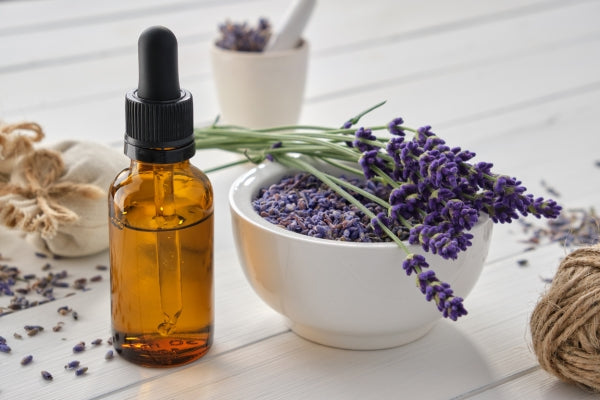Aromatherapy has been used for centuries to promote relaxation, enhance mood, and improve overall well-being. Central to this practice are essential oils, each offering unique therapeutic benefits. With so many options available, finding the best aromatherapy oils for your needs can feel overwhelming. This guide will walk you through everything you need to know to choose and use the best oils effectively.
What Are Aromatherapy Oils?
Aromatherapy oils, commonly known as essential oils, are concentrated plant extracts that capture the essence, scent, and beneficial properties of plants. These oils are extracted through methods such as steam distillation, cold pressing, or solvent extraction.
How Do They Work?
Aromatherapy oils interact with the olfactory system (sense of smell) and skin to influence physical and emotional health. When inhaled or applied topically (diluted), these oils can:
-
Stimulate the limbic system, which affects emotions and memory.
-
Promote relaxation or energize the body.
-
Provide therapeutic benefits such as pain relief, improved focus, and better sleep.
Benefits of Aromatherapy Oils
1. Stress Relief
Certain oils, such as lavender and bergamot, are known for their calming properties. They help reduce stress hormones and promote a sense of peace.
2. Improved Sleep
Oils like chamomile and sandalwood have sedative effects, making them excellent choices for better sleep quality.
3. Enhanced Focus and Energy
Peppermint and rosemary oils are invigorating, helping to improve concentration and combat fatigue.
4. Pain Management
Eucalyptus and ginger oils are effective for relieving muscle and joint pain due to their anti-inflammatory properties.
5. Mood Enhancement
Citrus oils, such as orange and lemon, are uplifting and can combat feelings of sadness or low energy.
Top Aromatherapy Oils and Their Benefits
1. Lavender Oil
-
Benefits: Calms the mind, reduces anxiety, and improves sleep.
-
Best For: Stress relief and relaxation.
-
Usage: Diffuse in your bedroom or add to a warm bath.
2. Peppermint Oil
-
Benefits: Boosts energy, relieves headaches, and improves focus.
-
Best For: Enhancing productivity and alleviating nausea.
-
Usage: Inhale directly or dilute and apply to temples for headaches.
3. Eucalyptus Oil
-
Benefits: Clears airways, reduces inflammation, and alleviates sinus congestion.
-
Best For: Respiratory health and pain relief.
-
Usage: Add to a steam inhalation or dilute for a chest rub.
4. Tea Tree Oil
-
Benefits: Antimicrobial and antifungal properties.
-
Best For: Skin issues such as acne or fungal infections.
-
Usage: Dilute and apply to affected areas.
5. Ylang-Ylang Oil
-
Benefits: Reduces stress, promotes relaxation, and balances emotions.
-
Best For: Aromatherapy massages and calming rituals.
-
Usage: Mix with a carrier oil for a relaxing body massage.
6. Frankincense Oil
-
Benefits: Enhances meditation, reduces inflammation, and supports skin health.
-
Best For: Spiritual practices and anti-aging skincare.
-
Usage: Diffuse during meditation or add to your skincare routine.
7. Lemon Oil
-
Benefits: Boosts mood, supports immunity, and freshens air.
-
Best For: Uplifting environments and cleaning purposes.
-
Usage: Add to a diffuser or mix into natural cleaning solutions.
How to Use Aromatherapy Oils Safely
1. Dilution
Essential oils are highly concentrated and should be diluted with a carrier oil, such as coconut, jojoba, or almond oil, before applying to the skin. The recommended ratio is 1-2 drops of essential oil per teaspoon of carrier oil.
2. Patch Test
Always perform a patch test before using a new oil to check for allergies or skin sensitivity.
3. Inhalation
Use a diffuser, inhale directly from the bottle, or add a few drops to a bowl of hot water for steam inhalation.
4. Avoid Ingestion
Unless under the guidance of a certified professional, avoid ingesting essential oils as they can be toxic when consumed.
5. Storage
Store oils in dark glass bottles, away from heat and direct sunlight, to maintain their potency.
Factors to Consider When Choosing Aromatherapy Oils
-
Purity: Ensure the oil is 100% pure with no synthetic additives or fillers.
-
Source: Opt for oils sourced from native regions for the highest quality.
-
Extraction Method: Choose oils extracted through natural methods like steam distillation.
-
Certifications: Look for third-party testing or certifications such as USDA Organic.
-
Packaging: High-quality oils are stored in dark glass bottles to protect them from light.
Recommended Brands for Aromatherapy Oils
-
Zenful: Best quality organic essential oils for affordable prices.
-
doTERRA: Offers a wide range of therapeutic-grade essential oils.
-
Plant Therapy: Affordable and high-quality oils with rigorous testing.
-
Edens Garden: Pure, undiluted oils at excellent value.
-
Young Living: Renowned for their Seed to Seal quality commitment.
DIY Aromatherapy Recipes
1. Relaxing Sleep Blend
-
3 drops lavender oil
-
2 drops chamomile oil
-
1 drop ylang-ylang oil
Add to your diffuser before bedtime.
2. Energy Boost Blend
-
3 drops peppermint oil
-
2 drops lemon oil
Diffuse in the morning to kickstart your day.
3. Immune Support Blend
-
2 drops eucalyptus oil
-
2 drops tea tree oil
-
1 drop lemon oil
Use in a steam inhalation or diffuse during cold season.
Experience the best aromatherapy oils
Aromatherapy oils offer a natural and effective way to enhance your physical, emotional, and mental well-being. By understanding the unique properties of each oil and how to use them safely, you can create a personalized aromatherapy routine that suits your needs. Always prioritize quality when selecting oils and explore blends to maximize their benefits.
Ready to elevate your wellness journey? Visit Zenful to explore premium aromatherapy oils and start reaping their incredible benefits today!

Share:
Best essential oil: Everything you need to know
Aromatherapy for Pets